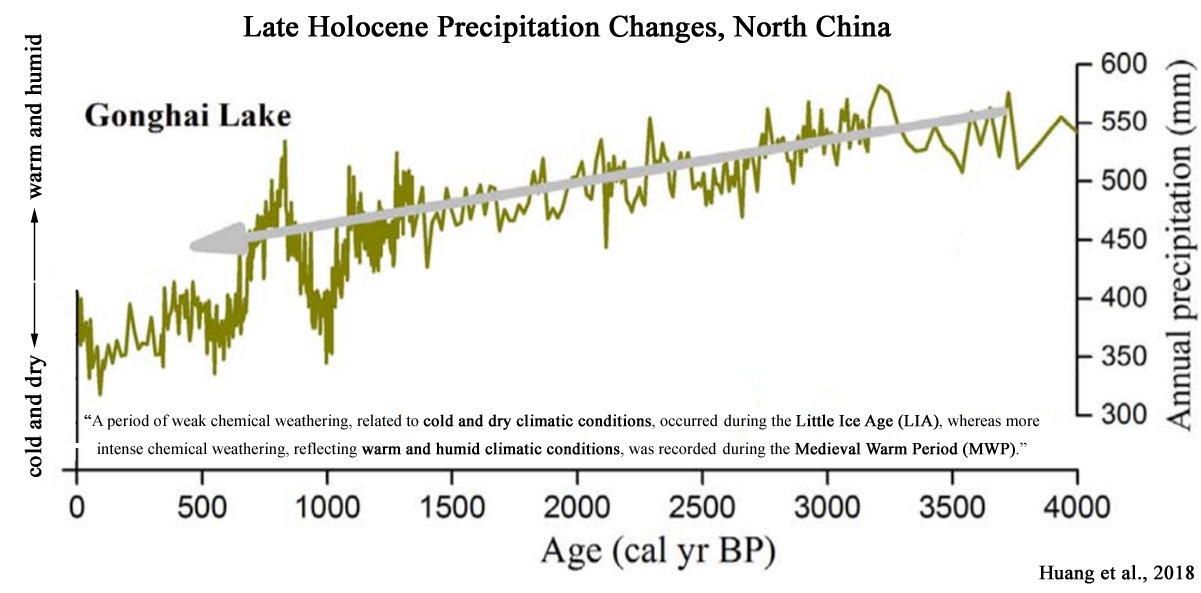By Kenneth Richard on 18. January 2018
Already 14 New (2018)
Non-Hockey Stick Papers

During 2017, there were 150 graphs from 122 scientific papers published in peer-reviewed journals that indicated modern temperatures are not unprecedented, unusual, or hockey-stick-shaped — nor do they fall outside the range of natural variability.
Less than 3 weeks into the new publication year, the explosion of non-alarming depictions of modern climate change continues.
Blarquez et al., 2018
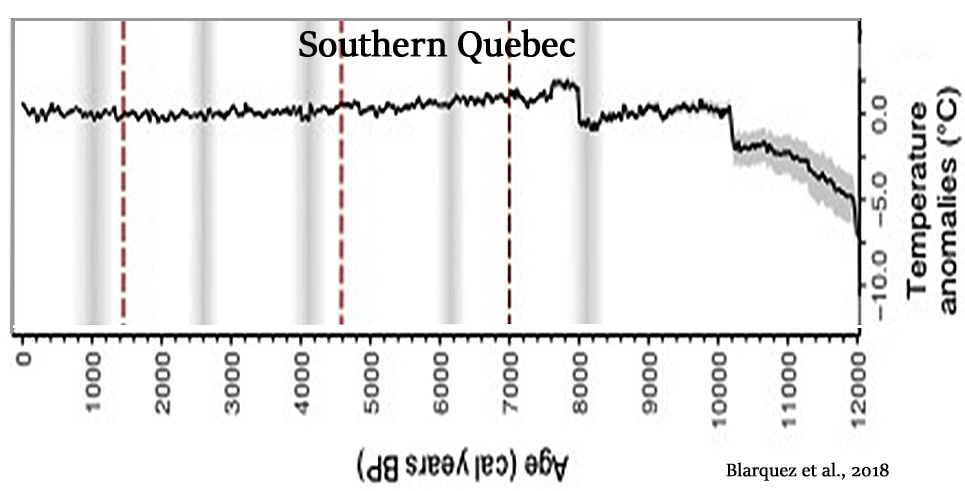
Magyari et al., 2018
…its climatic tolerance limits were used to infer July mean temperatures exceeding modern values by 2.8°C at this time [8200-6700 cal yr BP] (Magyari et al., 2012).
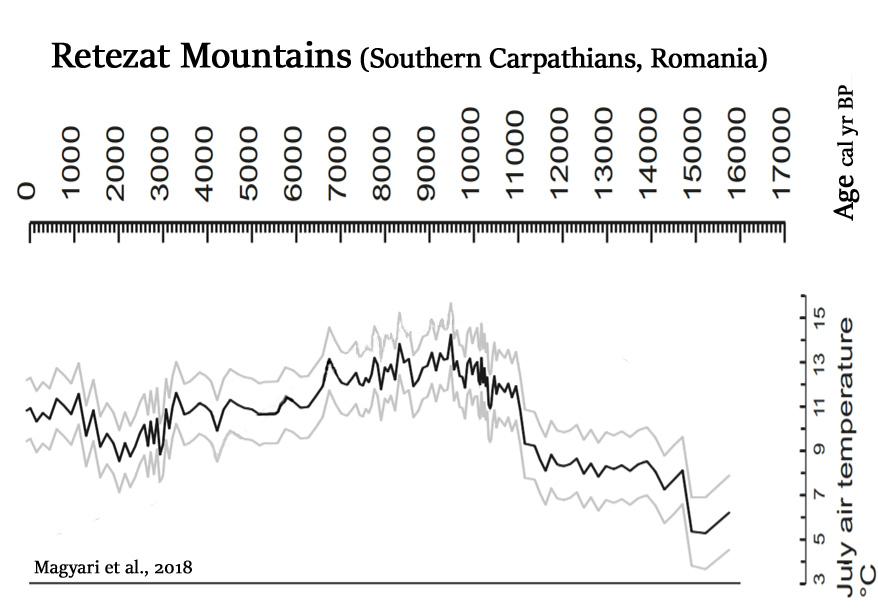
White et al., 2018
Our data, together with published work, indicate both a long-term trend in ENSO strength due to June insolation [solar] forcing and high-amplitude decadalcentennial fluctuations; both behaviors are shown in models. The best-supported mechanism for insolation-driven dampening of ENSO is weakening of the upwelling feedback by insolation-forced warming/deepening of thermocline source waters. … Another potential source of decadal-centennial forcing is total solar irradiance, which varied more in the early Holocene than the mid- to late Holocene [Marchitto et al., 2010]. Changing solar irradiance is theoretically capable of affecting ENSO via ocean dynamical cooling [Emile-Geay et al., 2007], and is correlated with centennial-scale variations in early Holocene ENSO [Marchitto et al., 2010].
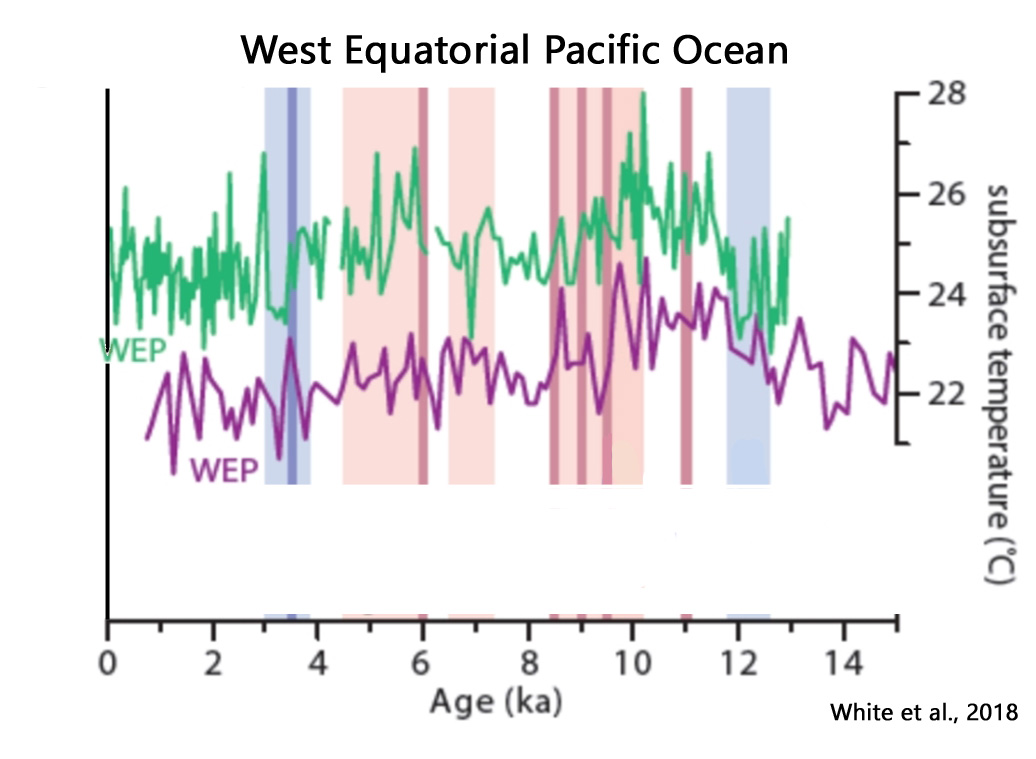
Song et al., 2018
[A] general warm to cold climate trend from the mid-Holocene to the present, which can be divided into two different stages: a warmer stage between 6842 and 1297 cal yr BP and a colder stage from 1297 cal yr BP to the present. … The general cooling trend may represent a response to decreasing solar insolation; however, the relative dryness or wetness of the climate may have been co-determined by westerlies and the East Asian summer monsoon (EASM). The climate had a teleconnection with the North Atlantic region, resulting from changes in solar activity.
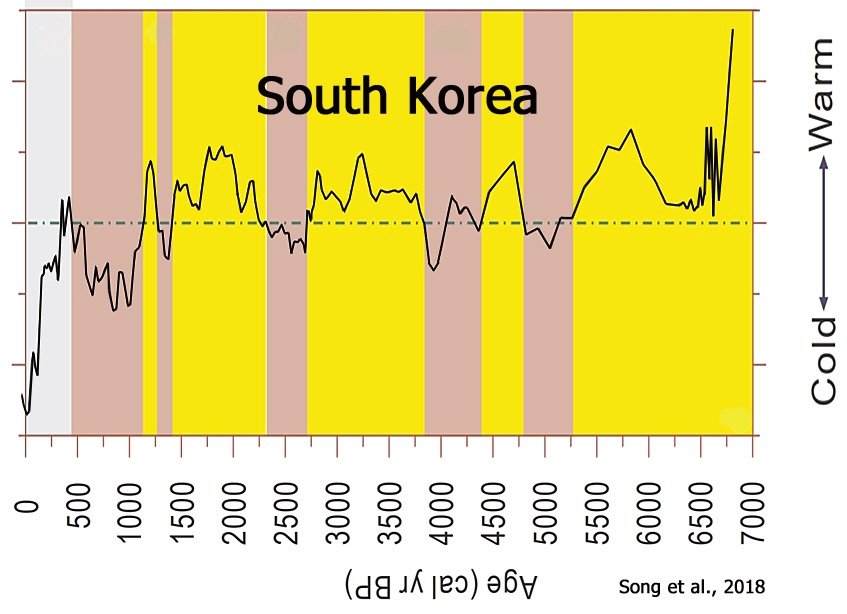
Huang et al., 2018
A period of weak chemical weathering, related to cold and dry climatic conditions, occurred during the Little Ice Age (LIA), whereas more intense chemical weathering, reflecting warm and humid climatic conditions, was recorded during the Medieval Warm Period (MWP). Besides, an intensification of chemical weathering in Poyang Lake during the late Holocene agrees well with strong ENSO activity, suggesting that moisture variations in central China may be predominantly driven by ENSO variability. … Rao et al. (2016b) demonstrated that a humid late-Holocene in central China and an arid late-Holocene in southern and northern China were significantly related to strong ENSO activity. Thus, it seems that ENSO forcing may be likely dominant factor controlling moisture variations in central China.
